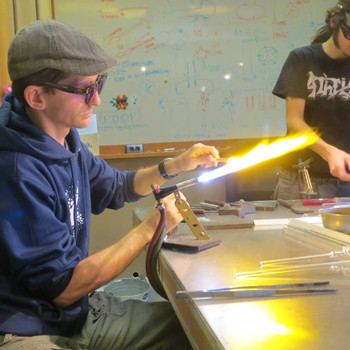What is the time required for half of the nuclei of a radioactive isotope to decay called?
1 Answer
This is known as the half-life
Explanation:
The "half-life" of a sample of radioactive isotope is defined as the amount of time it takes for half of the nuclei in the sample to decay. For example, Carbon-14 is a naturally-occurring radioactive isotope of carbon, with a half-life of around 5700 years. This means that, if you take a pure sample of Carbon-14, in 5700 years half of the sample will have decayed (and become Nitrogen-14). In another 5700 years, half of the remaining sample will have decayed (leaving 25% of the sample as Carbon-14, and 75% as Nitrogen-14).
Radioactive isotopes, therefore, decay in an exponential way. Every time a half-life (in this case, 5700 years) goes by, half of the sample has decayed... then half of the remainder in another 5700 years, then half of the remainder...
Time 0: 100% Carbon-14
Time 5700 years: 50% Carbon-14 remains
Time 10400 years: 25% Carbon-14 remains
Time 16100 years: 12.5% Carbon-14 remains
... and so on. We can use this property to determine the age of a fossil containing carbon, by looking at the ratio of Carbon-14 to Nitrogen-14 and figuring out from that how much time has passed since the original animal or plant died. This is called Carbon Dating, and is accurate out to about 50,000 years (about 10 half-lives).

